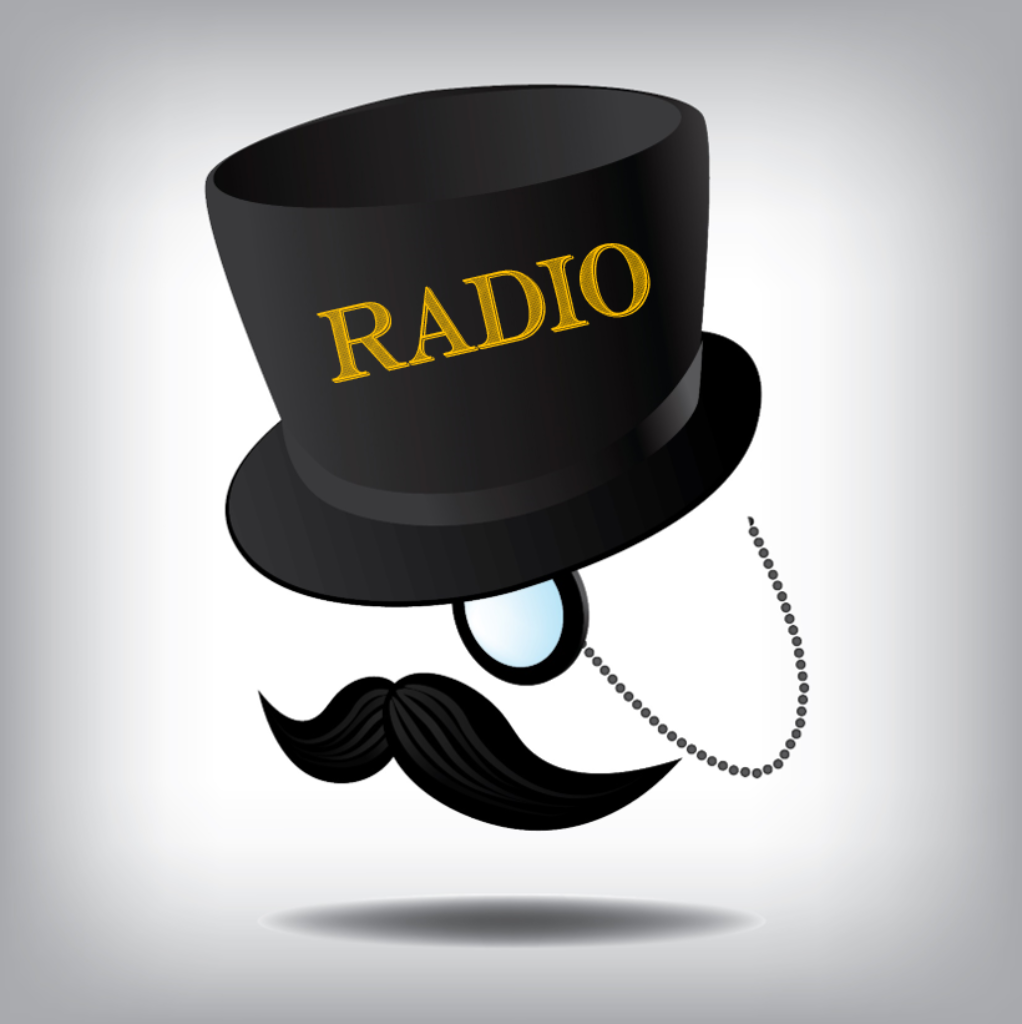
Yesterday’s blog post addressed broadcast radio’s malaise – in both overall listening levels and in perceptions of the medium by audiences and advertisers. It’s hard to say which is worse because they both feed each other.
People want to be part of cool, popular trends. When images sour, usage usually follows that downward trajectory. And today’s radio broadcasters are generally pulling for some type of regulatory relief; that is, the ability to buy more properties, all part of a new wave of consolidation.
But as we discussed, deregulating radio another notch or two isn’t likely to materially change the game. Those who have left the radio party still need a reason to come back. One company virtually owning most of the stations in town isn’t going to incentivize anyone. More consolidation may prop up billing – just as cannabis advertising undoubtedly will – but it is likely it will only act as a steroid, not a solution.
For the latter to take place, broadcast radio companies – at least the majority of them – are going to need to get on the same page. Or at least end up in the same prayer book. That’s because without widescale industry initiatives, AM/FM stations as we know them aren’t likely to heal themselves.
So how to change course? How to affect change? And is it even realistic?
Maybe the cake is baked. And maybe I’m living in Tomorrowland, Fantasyland, or (gasp!) the metaverse.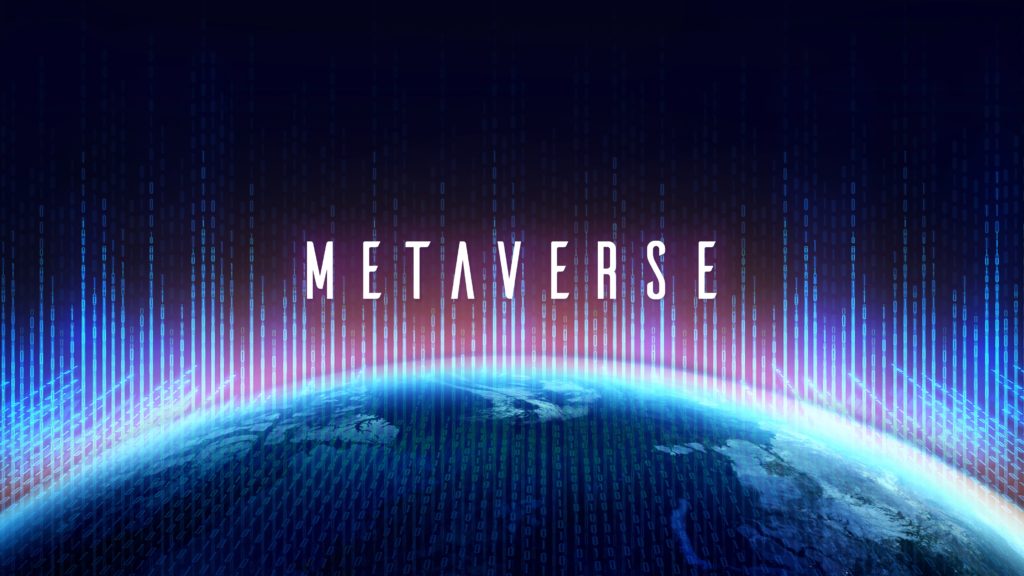
We’re not talking about a parallel universe here. Its the one we’re living in right now. Crazily, we inherently know what’s wrong. The signs are all there. We hear all the time from disgruntled current listeners, as well as those who have left the fold. We see it in the research, but choose to mostly look the other way. After all, commercials are the price listeners have to pay for free radio. And we have to cluster them up in two excessively long breaks in order to avoid meter migration. Voicetracking is simply a financial reality, even though it often distances stations from consumers and communities. And we simply cannot afford to make a mistake with a new format that hasn’t shown proven success in a top market.
So I approached the challenge of radio reversing course in the same way I would attack a radio station trying to reposition itself away from a brand that has perhaps soured or lost some of its punch. Radio’s problems, however, can’t be addressed by pithy slogans and a mass marketing campaign, even if there were available funds to make that happen.
And the crazy thing about my wild-haired scheme is that the same condition that has exacerbated radio’s problems – COVID – could provide the societal reset that broadcast radio desperately needs. The pandemic has directly led to less commuting to and from the office, less communal at-work listening, fewer gatherings. concerts, and promotions, and the erosion of station culture and camaraderie.
But as we’re witnessing, COVID is receding. Most consumers – for better or worse – are seeking normalcy, once again doing things they haven’t done in two years. They’re attending sporting events, concerts, and museums, as well as dining out, traveling, and planning family gatherings and celebrations. That signals a time of renewal and regeneration – a moment of reinvention when bold moves can be made that are actually noticed by a population seeking a change of scenery. Brands that act in concert with this vibe stand a chance of not just making waves, but making history.
But an entire industry? Especially one that has been mired in sameness and tradition for the better part of a century; one that has no sense of competitive unity, where all the owners are famous for going their own way, and not working together.
No, not radio, but the auto industry.
They’ve been rocked by two major earthquakes: COVID, and its reverberations like supply chain woes, and an outsider – a South African named Musk – is forcing change on the other 30 OEMS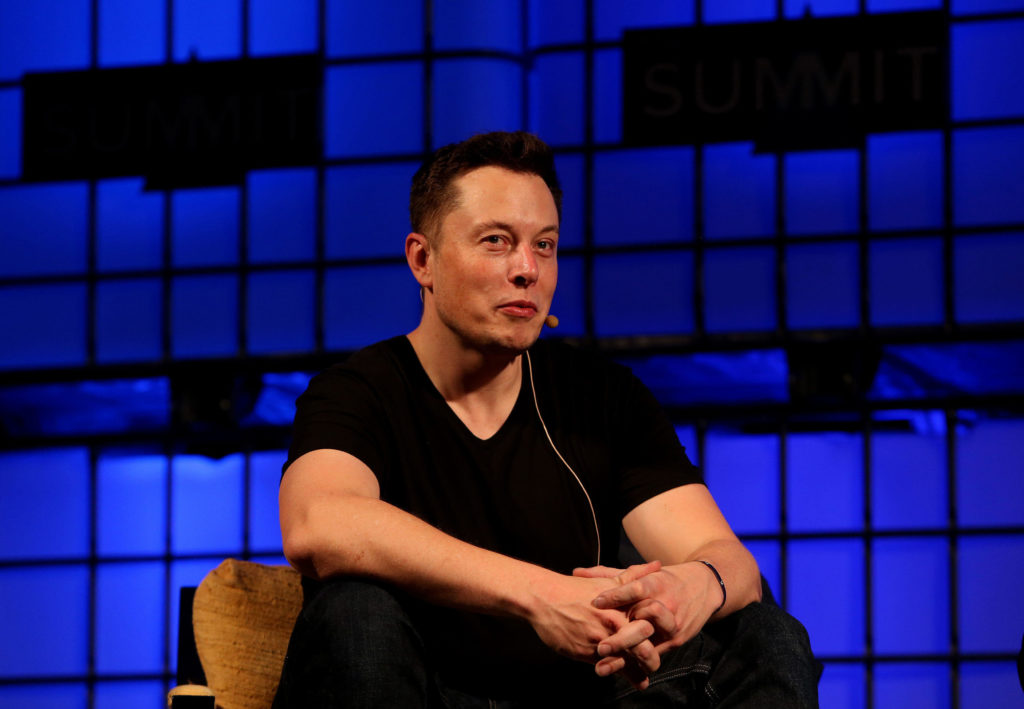 (original equipment manufacturers). Love him or hate him (there is no in between), the iconoclast has changed the industry’s notion how about electrification, as well as how vehicles are designed, manufactured, and sold. While his counterparts at Ford, Toyota, and BMW may despise Musk, he has enabled the revolution we’re witnessing now. There would be no Carvana without Tesla, nor would there be F150 Lightings or Lyriqs.
(original equipment manufacturers). Love him or hate him (there is no in between), the iconoclast has changed the industry’s notion how about electrification, as well as how vehicles are designed, manufactured, and sold. While his counterparts at Ford, Toyota, and BMW may despise Musk, he has enabled the revolution we’re witnessing now. There would be no Carvana without Tesla, nor would there be F150 Lightings or Lyriqs.
The change in the auto sector was palpable at CES this January. While some business sectors stayed the course during COVID, car makers did not stand still, reinvesting in research, development, and the product.
The first person I ever heard who said it about the radio industry was another outsider here in America. James Cridland showed up at Radio Ink’s “Convergence” conference (one of the better ones, by the way), and declared that part of U.S. radio’s problem was the biggest companies were not “speaking in one voice.”
He was right, of course. So for the purpose of this exercise, let’s imagine more unanimity and a more cooperative spirit.
And to that end, here are some action steps that just might raise eyebrows, shake things up, and stimulate conversations about innovation and content so necessary for a healthy medium to have:
1. Fewer commercials and shorter breaks – The spot load has generally suffered from inflation over the decades, made worse by the accepted norm that two stopsets are “the way.” But when everyone in the market is programming commercials with this architecture, and even breaking at roughly the same times in an hour, whatever value this strategy had has been lost. It’s time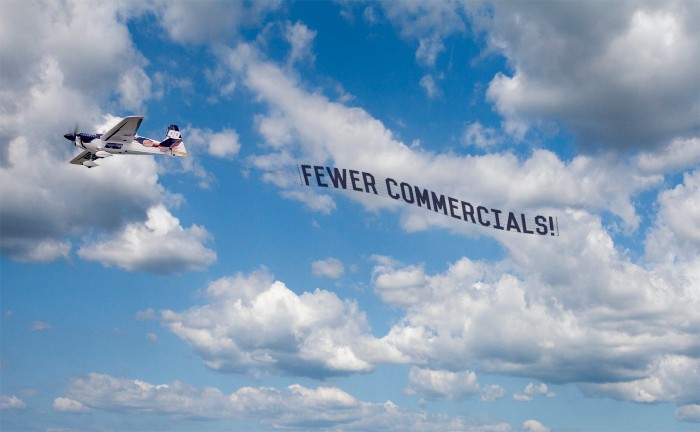 for stations to boldly reconfigure policies and clocks. Fewer commercials, made shorter with the addition of a stopset or two would change the way radio sounds.
for stations to boldly reconfigure policies and clocks. Fewer commercials, made shorter with the addition of a stopset or two would change the way radio sounds.
Is there risk? Of course there is. But for stations out of the top 10, how much – really?
This is about creating better listening experiences, and it starts with addressing Public Enemy #1 – commercials, their quantity and how they’re programmed.
And here’s a bonus: A lower commercial loads means higher rates. Instead of flooding the market with inventory, let’s steal a page from economist Adam Smith playbook: decrease the number of commercials to increase demand (and rates).
2. An investment in talent – This is an old saw in this blog, so don’t ask so surprised. Radio needs to not just recruit, train, 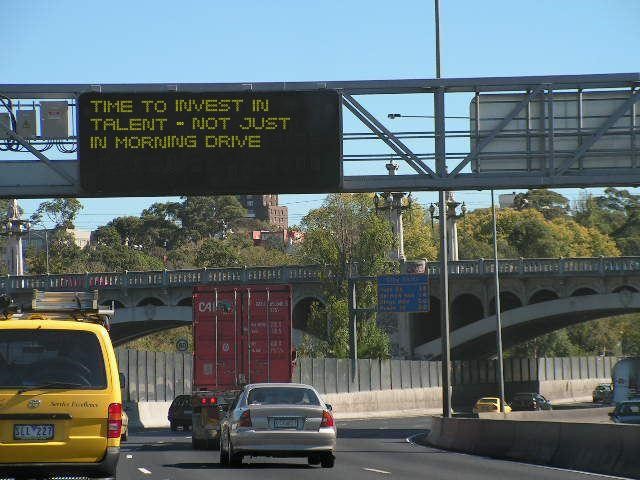 and hire. It must invest in the next generation(s) of talent. There are sprouts out there, but they need attention. The College Radio Foundation and the now RAB-owned and operated National Radio Talent System (Dan Vallie’s baby) require industry attention and financial support.
and hire. It must invest in the next generation(s) of talent. There are sprouts out there, but they need attention. The College Radio Foundation and the now RAB-owned and operated National Radio Talent System (Dan Vallie’s baby) require industry attention and financial support.
Radio needs better talent – and more of it in more dayparts – including nights. Did ratings after dark atrophy because of bad jocks or bad, inattentive programming? Could the next generation’s Dan Ingram or Jon Landecker light up the nighttime airwaves again? There’s only one way to find out.
Syndicated radio shows have helped sustain radio, especially in mid and small markets. But when out of town talent and voicetracking become the only voices you hear, something is being lost in translation.
And with that comes…

3. Music curation – Radio stations of all formats need not present mind-numbing mechanical experiences when it comes to music. Talent who lean into and champion the music can become important once again to the discovery process. The audience appreciates jocks who “like the music as much as they do.” That’s how icons from Jim Ladd, Bob Coburn, Pierre Robert, and Meg Griffin made their livings back in the day. They acted as tour guides, concierges, and Sherpas.
In today’s playlist economy, the music has been algorithmicized to a point where consumers are disconnected from the music, the artists, and the albums. The reason that vinyl continues to make its unlikely comeback is because it’s the anti-Spotify. Of course, when it’s done right, so can radio.
And that leads to….
4. Making nice with the labels – No, we’re not talking payola and other palm-greasing policies from days passed. But a spirit of collaboration and communication that can help each industry build brands, connect with audiences, and mutually prosper as a result. As touring and merch have become the currency for artists, radio can move the needle on both of these product lines. Putting butts in seats and B-to-C transactions is what broadcasters do best.
5. Attention to quality – Whoever had the notion that programmers can oversee three, four, or more brands – in different markets – didn’t understand how important quality control is to products and services like entertainment media. Now that there is more content to account for – social media, dashboard metadata, podcasts, streams, and mobile apps – the content people are strapped for resources, manpower, and support. As the competition has ramped up and includes players like Apple, Google, SiriusXM, and Spotify, radio has economized and cut corners, hoping no one notices.
They’re noticing.
Consumers have come to expect excellence in the media they consume. Websites that aren’t updated, no merch at station appearances, apps that haven’t been updated in years, music scheduling systems that are running 2005 logs, and other content atrocities are part and parcel of broadcast radio’s state of the art.
6. Doubling down on “live & local” – This is not my idea, but one proffered by the newly minted Chairwoman of the FCC, Jessica Rosenworcel. I wrote about her last week. Her take on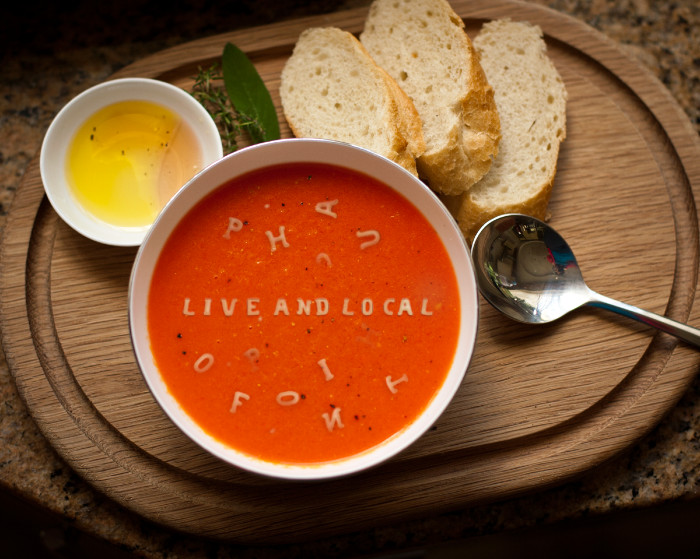 radio in 2022 is that the medium’s superpower is that we’re local in a world of global everything. No one has the trust and impact in communities more than radio. But mailing it in will no longer work.
radio in 2022 is that the medium’s superpower is that we’re local in a world of global everything. No one has the trust and impact in communities more than radio. But mailing it in will no longer work.
The industry needs to invest in street teams again (and pay them enough to make it worth their while). A footnote: that’s where some of the new talent infusion will come from. And of course vehicles that aren’t just empty shells on four wheels, but remote studios that foster presence and community.
And with that comes broadcasting in “real time.” In a world of canned playlists, recorded podcasts, and satellite radio from faraway places, any marketer will tell you that when “live & local” isn’t just a slogan but a raison d’être – a mission statement – it will print with consumers.
7. Format innovation – finally – Yesterday, I talked about the insidious “Wheel of Formats,” with the same-old choices. Over the decades, operators would rather become the fourth AC or the third Country station with that dog of an FM station that changes formats every few years.
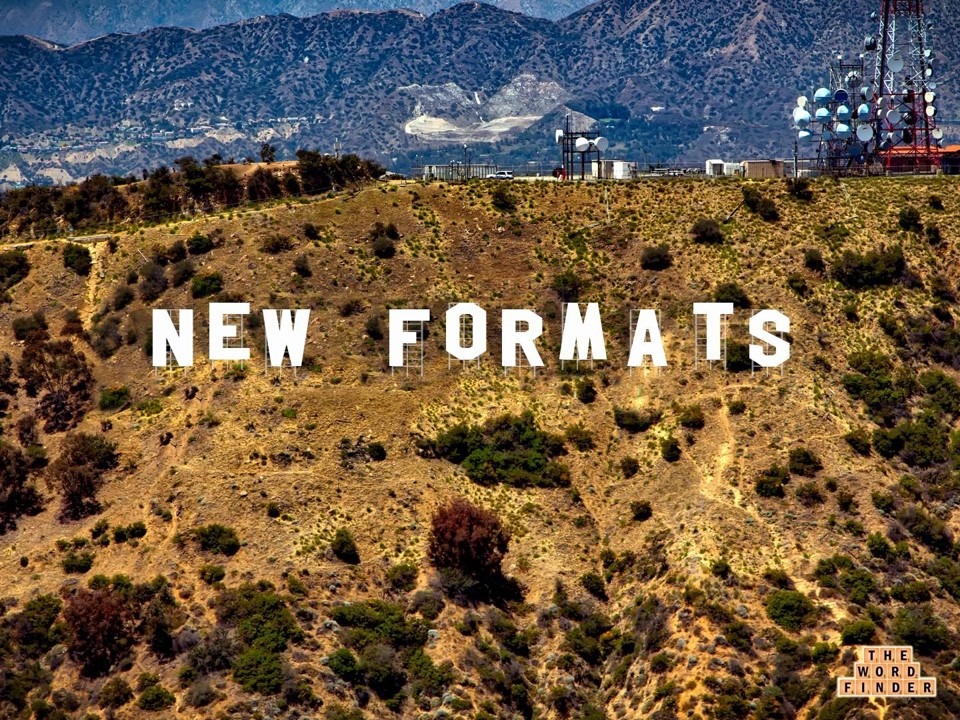 So especially if that next round of deregulation actually happens, why not agree as an industry that when a single owner has 4 or 5 FM stations, the runt of the litter must try something innovative, rather than be the next run-of-the-mill radio station designed to drive down shares of its competitors. Of course, this takes courage and innovation.
So especially if that next round of deregulation actually happens, why not agree as an industry that when a single owner has 4 or 5 FM stations, the runt of the litter must try something innovative, rather than be the next run-of-the-mill radio station designed to drive down shares of its competitors. Of course, this takes courage and innovation.
But when was the last time a major broadcaster challenged its programming teams to come up with a new format – not a new contest or morning show benchmark bit – but an actual format. Yes, this requires research, tinkering, and teamwork – all in short supply. But that’s what it takes to spawn something truly new that could be additive to radio broadcasting’s arsenal of content.
And in case you hadn’t noticed, those HD2s make wonderful sandboxes – a way for radio to go Off-Broadway to work out the kinks, build audience, and figure it out. When it’s ready for prime time, dump that second Classic Hits station and give it a whirl.
8. Create new business models – Had I told you back in 2000 that consumers would start buying cars online from companies that had vertical vending machines and no sales people, you’d have laughed me right out of the dealership. But that’s how millions of us buy – and sell cars now.
So, how can we re-examine how radio is funded and monetized? Are there subscription models that could work? After all nearly nine in ten of us subscribes to a video or audio content service now. Is there an Airbnb play for radio that isn’t dependent on ratings and spots? Are there formats indigenous to particular markets – gambling in Reno or Vegas, automotive in Detroit, and travel and tourism in Miami.
This is not unlike what Hubbard’s WFED – the Federal News Network – broadcasts in Washington, D.C., a radio station aimed at all those government workers. Or Mid-West Family’s “The Farm” in Wisconsin, catering to all those folks making their living in America’s Dairyland.
Are there ways of monetizing radio stations we haven’t thought of? (Yes, public radio – how about a bona fide alternative to those tired, ratings-erosive pledge drives? It has to start with a charge to innovate.)
9. Open radio ownership to foreign investors – This is nothing new. I heard Larry Rosin offer this one up in our “President of Radio” session at our Jacobs Media Summit back in 2008. In the same way Elon Musk has rejected “the way we’ve always done it,” the hope would be that an infusion of outside stimulus and investment (think Richard Branson) could be just the cattle prod radio needs. It sure has worked for the auto industry.
10. Make better commercials – My good friend Jerry Lee would shoot me if I didn’t mention upgrading radio’s marketing efforts on behalf of clients – and listeners. As his research has clearly shown over the years, commercial production can be better and more effective. But not when it’s produced by one person in a studio cranking spots for a half dozen stations, as well as stations in Omaha, Wichita, and Des Moines. Imagine local commercials that worked, that stood out, and that weren’t offensive and cringe-worthy.
So, that’s my Top 10 “Wish List.” But wait, there’s more. And that comes from you.
And if you’re laughing or crying as you’ve read this list of impossible “to-do’s,” I can tell you there are CEOs in this business ready to roll the dice, take intelligent risks, and try new things. They may need some encouragement, but they are as tired of “it is what it is” thinking as all of you are.
Rather than ripping those industry leaders a new one in the “comments” section or on social, why not focus on what could happen? Let’s hear and see innovation – not whining, snark, and hand-wringing.
How do we make it better?
Part 1 of this blog post is accessible here.
- Media And Technology In 2025: Believe It Or Not! - April 18, 2025
- In Radio, You Just Never Know - April 17, 2025
- The Secret To Making A Great Podcast (And Great Radio) - April 16, 2025



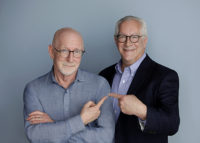
Thank you, Fred. Great stimulation list. New Local formats and presentation are top of list/top of mind. Build it without great expense to create audience & advertiser attraction. It can be done, without delay.
Indeed it can, Clark.
Great read, Fred, yesterday and today.
Agree with most of it, and it’ll be the smaller broadcasters (that being the key word) that do these things. Some already are!
I know that, Rob. The local pathway is something many small broadcasters do supremely well. Many are truly community gems.
Fantastic article, Fred. We need a ratings system that reflects TODAY – whoever and wherever it comes from. We’re all excited about “wearables” but where’s streaming measurement which includes earpod measurement? (and that doesn’t mean finding a stat that “alllows” for it!). Broadcast companies MUST collaborate on this. Put the competitive crap on the back burner and get our listening measurement in tune with 2022!!! When that changes, watch how programming and creativity change!!
I wrestled over making the ratings #11, John. It is such a gnarly topic, not just because of what is/what isn’t being measured, but how. I’m not sure the industry really wants to see “everything,” but ultimately, isn’t that the only way to compete. And then there’s the issue of revenue. I don’t believe 90% of sellers could make a case for their station of employ without rankers. I wish I felt differently. Thanks for commenting.
Rankers can be a part of the story but only a small part. For a great read on measurement see today’s Laura Forman commentary in the WSJ.
Perfect thoughts John. When I first got the call that stopsets would be limited to 2 per hour, I cringed at the thought. It’s gotten way out of hand these days with people like me pleading with sales departments to get on board and be a part of the programming rather than the problem. If the PPM strategy is best served by 2 9-minute breaks in the programming, then there’s an obvious issue with the strategy. It’s counter to the true purpose of radio advertising. Being 10th or 11th in a commercial set serves little purpose for anyone. Believing that the current sampling is “accurate” for any market is a joke. In 2014 the Los Angeles market had around 1400 meters in the field. Our station could be assured of its #1 position with a weekly average of 14 meters. No joke. Is this serving radio? We’ve been doing all we can do to game the system-maybe it’s time to rethink that.
Rankers can be a part of the story but only a small part. For a great read on measurement see today’s Laura Forman commentary in the WSJ.
Actually I do have another suggestion. As Uber radio points out…maybe there are lifestyle formats that would work. I’m thinking targeting retirees, college kids, LGBTQ community, tech workers, union workers (WCFL – The Voice of Labor!) etc. KSAN 910 in the Bay Area did a tech format for several years during the early boom days of the internet and couldn’t get out of the way of the the revenue.
Jackson, you’ve hit on an avenue that is occasionally discussed, but rarely (if ever) acted upon. We’ve looked at Walmart Radio in this blog as well, a “station” that its employees and shoppers listen to. The idea of lifestyle may be most tangible on Sports Radio where the culture is a fresh, 24/7 recurring cycle. Thanks for adding to this conversation.
well, not to plug the new book, but you and I are on the same page 100%… great article…. yes, it’s time to take our industry back. True Radio Confessions was meant as a love letter to all the great people I worked with in radio, but it’s also a wake up call. Answer the damn phone. BTW, I even mention Fred Jacobs in the book… as a success story. Thanks for the article WELL DONE… you used fewer than the 126,000 words I used in the book. Did I mention I have a new book out? Smile, dd
I’m glad you plugged the book, you prolific author, you. Appreciate the comment, Dwight.
“True Radio Confessions: Sex, Drug, and Rock & Roll” can be purchased here.
You got a lot here, Fred-and while you’ve only scratched the surface, these elephants have to be eaten one bite at a time. The days of our fascination with voices coming through the ether are apparently over, and content is what really drives media use. The revenue potential of a subscription model expanding the brand of an existing OTA signal should be there. (Imagine “Good For You” -Olivia Rodrigo in its intended form online while the “radio” version airs to the unsubscribed). “Kiss” or “Power” or “The Bull” can add value to that brand by reaching out to where the listener is – more and more online. We might be accelerating the demise of towers and transmitters, but we know eventually online consumption will overtake traditional broadcasting as we know it. Even asking millennials to forego the true version of their favorite songs for a sanitized “radio” version is a bit much in 2022. Remember, rock radio took hold playing the 9 minute version of “Freebird” when Top 40 played the 5 minute “edit”. “Spotify” is a well-known, well accepted brand by younger listeners -as is “Sirius/XM” and “Tidal”. Maybe looking at our “stations” as brands rather than “stations” is a better way to go fight the battle of public opinion. It’s a start.
But for “towers and transmitters”–radio’s crown jewels (for good reason)–the FCC would have almost no say over content/operations. There are already thousands of unfettered internet-only “radio stations.” Some of them are excellent, but I’ll bet every one of them would salivate at the prospect of a frequency channel becoming available to them.
Contrast that with the lackadaisical attitude displayed by most of those who actually have achieved a license–once they’ve made it into the walled garden, all fire leaves the belly. Such a shame.
Radio broadcasters have had to unfairly compete against unregulated media, adding another speed bump. And thumbs up to the concept of stations as “brands,” featuring a variety of content and distribution points, with towers and transmitters just being one of them. I appreciate you weighing in on this.
There’s a lot to unpack here, so here are my initial takes on a few things…
Regarding “An investment in talent”, Jon Ellis (who runs NorthPine and has just left his own TV job) has a new opinion post about how TV news might be scaring away applicants by adding more and more qualifications/duties to normal job postings. While it specifically is about TV, it can also apply to radio.
Regarding “Music curation”, one thing that’s stuck with me from 91X’s recent shift toward a Gold-based format has been the explicit mention during the official announcement that “music discovery” isn’t just about new music. Even taking into account the self-serving nature of that (after all, it was part of a format announcement), it’s still true–and perhaps underscores why it might be even truer for more-general Gold-based formats.
Regarding “Doubling down on ‘live & local'”, even though it’s also somewhat self-serving, I’ve noticed how both Midwest Communications and Woodward have been playing up their bona fides in several of their recent talent announcements. Other groups are also doing that, of course, but it certainly helps to have two of Northeast Wisconsin’s three main commercial operators doing so.
Regarding “Open radio ownership to foreign investors”, whether or not it actually does come to pass, the U.S. industry should definitely be familiar with the operations of such international groups as (for starters) Bauer Media Group and Prisa–along with the main operators (both commercial and non-commercial) in other nations.
Finally, one thing that I’d add is that station/format branding also needs a lot more thought and effort; https://medium.com/en-frecuencia/editorial-bottom-of-the-name-barrel-aa5d1ba66a5a has some recent examples why that also holds true in Mexico.
I appreciate the thoughtful response to a my detailed post, Eric. I especially like the comment about 91X’s “backward” treatment of curation, something the best Classic Rock stations and personalities have done for decades.
I concur that “live & local” continues to be extremely powerful when stations actually live up to the slogan.
When it comes to foreign ownership of U.S. radio companies, you are correct that CEOs here are undoubtedly familiar with overseas radio. But I think when it actually comes to our shores, it becomes tangible. And if it lives up to the hype, could influence the way radio is done in America.
Funny about the branding. I had a paragraph on the preponderance of Kisses, Eagles, Bears, Hots, and Mixes, but felt the post was busy enough as it was. Thanks for including it in your always smart comments.
I actually feel there are more realistic opportunities in filling format holes—than creating new ones.
However, they need to be presented with a list of more than 235 songs.
This format hole strategy could also work with being that “second classic hits station”…
Just be way better and more interesting than the other one.
There’s only over 5 decades of songs that listeners are waiting/wanting to hear again…
Marty, you’re right, of course. When I thought about tried and true formats, I was assuming the usual 235 song execution. There is life in many traditional formats, depending on how the music is selected and programmed. Thanks for making that important distinction.
Another great and thought-provoking piece, Fred.
Without going through each of the points, the overarching theme might be focused on what ROLE a station plays. What is its actual PURPOSE of the station? What are we attempting to be and do?
Before going immediately to the minutiae of how many songs are in rotation, how many spots should be played, voice-tracking or no, how many breaks per hour and the usual tactical things most radio people today immediately run to, what are we actually attempting to do?
1. What/who is our target?
2. How do we create a “soul” and a “vibe” for that target.
3. What is most important to our target? Where to we physically go to make personal connections. Schools, music events, targeted community events, sporting events, an alternative club, helping a family, adopting a cause, mobilizing to make a difference, doing something fun, noteworthy or just plain funny?
4. What can we do that streaming services and satellite radio CAN’T?
5. How can we personally connect with our target to make us their friend and confidante on a personal level?
6. What will we do to be emotionally connecting to our “tribe.”
7. What do we stand for? For what do we want to be “famous?”
8. What is the experience our listeners should have over the air and through each of the varied platforms?
9. How can we build a strategy to get amazing outcomes for our advertisers? In what ways can we be marketing experts that can do more to generate results than run spots about “all your flooring needs?”
Just a few questions that lead us to brand creation.
The music/playlists/formats are what they are to a great degree. Of course, what one does with stations in any market unique market situation will differ – they must.
Forever the “Evangelist for Localism,” – I say repeatedly, that “radio is fundamentally a local business.”
If you want a great playlist alone in a sterile setting, radio is completely unnecessary. There are far better means by which to get that.
You want a great local and personally connecting experience, that sees the same things you do, at eye level, in your town – and that also has a great playlist as part of the mix, that’s radio’s sweet spot.
The day that some brilliant person gave programmers the list of things one can’t talk about, “because you can get that on your phone,” was the moment the very need or experience along with companionship was sucked out of radio. It left personalities with NOTHING to say – and replaced it with generic, white-labeled, evergreen radio babble” that’s supposedly “relatable” and plays everywhere (Which way do you have your toilet paper come off the roll? Top or bottom? Etc.) and other non-specific and non-emotive generic radio prattle.
How do we draw our our targeted group of individuals to us to become their companions and friends?
It’s really more about what we do BETWEEN the songs. Very little is EVER discussed about that, anywhere. Why?!?
Our overall purpose and role – and what we do between the songs is the issue at-hand!!
Tom Langmyer
President & CEO
Great Lakes Media
Advisory & Acquisitions Group
“Famous for Localism”
I thoroughly enjoyed reading both comments, Tom. You’ve got amazing perspective and a succinct way of making your points. I concur with you that radio tried to do what new media were doing, when great execution of the traditional model might have been helpful. In the same way that AM stations couldn’t keep up with FM, broadcast radio has struggled to find its place in the media hierarchy. And it stopped doing so many of the things that made it great to begin with. Call it hubris or arrogance, the industry lost its way at precisely the time competing forces driven by technology aligned. Thanks so much for engaging on this topic.
I went to one of two sold out Snoop Dogg/Ice Cube concerts at our local 18,000 seat arena, BOK Center.
I’ve been in rock radio in Tulsa for 17 years and saw many of the same faces I saw when Metallica sold out the same venue.
When is a rock station going to drop in more rap and hip hop songs? The same songs that the core audience left rock radio for in the first place?
They won’t because they know the P1s will start screaming “rap crap” on social media. About the same as classic rock radio playing James Taylor or Earth, Wind & Fire. Both artists were played on AOR in the 70s but were shunted off to other formats thanks to Disco Demolition and the rock purity test AORs all took.
Mark Jeffries’ response to your comment, Lynn, exposes the deep roots of format radio. As FM grew, the focus narrowed. It is noteworthy that SiriusXM has exponentially more channels available than the average medium market. And yet few mashup genres. I think there may be something to your suggestion, and perhaps someone will give it a go.
Outstanding stuff, my friend. This is one of your finest pieces of work…and that is saying a lot!
High praise indeed. I very much appreciate it those words, Warren.
When I was programming in the 90’s I used to watch people on LIMEWIRE constantly. It was a music sharing service like Naptster except that you could see the music on other people’s computer by reversing their process. So if you punched in Ozzy to download his songs, you could also see all the OTHER songs that person had in addition to Ozzy. Always…Always…there were a huge amount of other songs that totally fit with Ozzy (or whoever) but were not from the same format at all. Think grabbing a country song like Tennessee Whiskey and putting It on an AC station. High likelyhood that many will fit, but it’s rarely if ever done.
It made it so easy, and safe, to pull songs from other formats to widen my playlist and make it unique. I already knew what would ‘cross over’.
Point being, you could actually see much the same patterns person after person, and those patterns were basically in radio terms, new formats. Lots of them going in all directions. Which pretty much is…like in your excellent article…very careful (and different) music curation and widening well beyond 235 songs.
I doubt people’s musical spectrum has narrowed. Just our biz’s.
It’s crazy, Pat. Back in the 80s and 90s, library size for formats that featured gold were reasonably sized (IMMO). Then as PPM took hold as the ratings “currency,” we systematically went on a library diet, ratcheting down library size each year. So, as people were building their own libraries of thousands of songs, first on their iPods and later on Spotify, radio is moving in the opposite direction of audience tastes. It is harder to schedule a library of 550 songs (with shuttled music coming in and out each month), but that’s how “variety” is created and sustained. Thanks for your comment, as always, Pat.